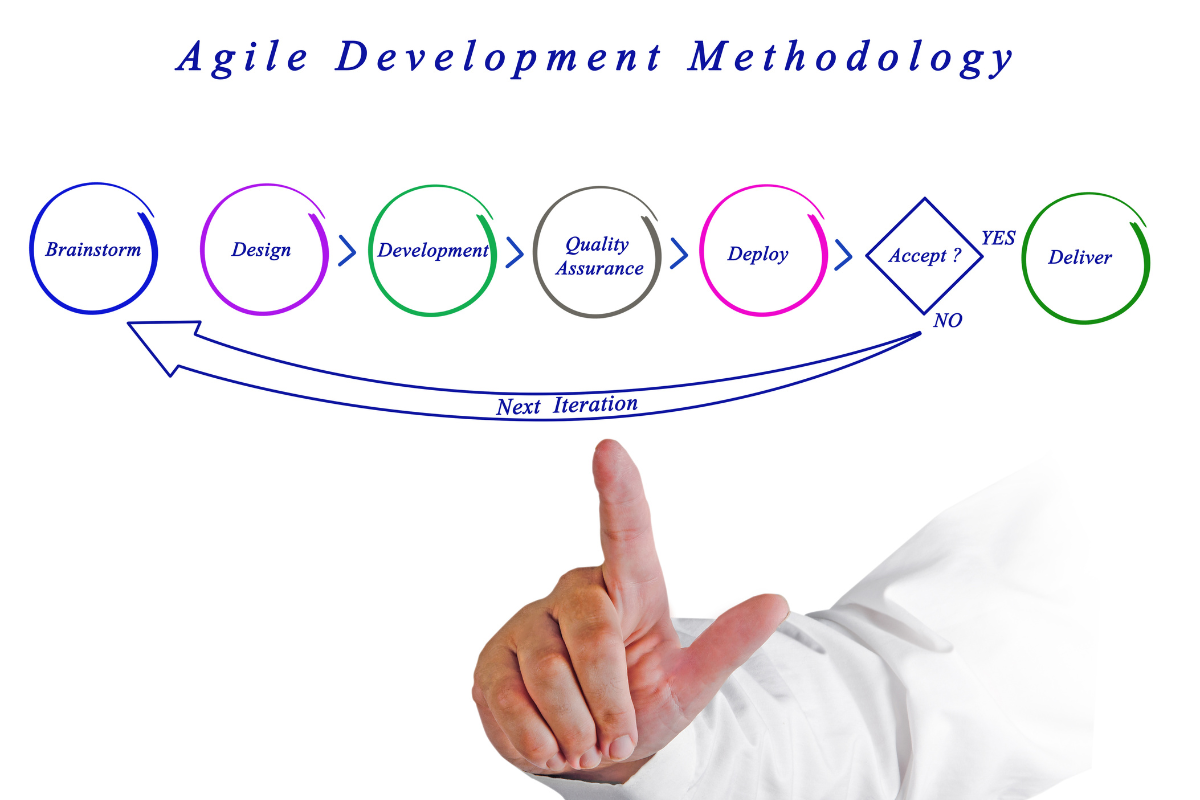In today’s fast-paced digital landscape, where innovation is the key to staying ahead, software development methodologies play a pivotal role in determining the success of projects.
Traditional approaches often struggle to keep up with the dynamic nature of modern software development.
However, Agile Engineering emerges as a transformative force, pushing the boundaries of conventional methodologies and paving the way for more efficient, flexible, and agile software development services.
Evolution Of Agile Engineering
Agile Engineering represents a paradigm shift in software development methodologies, stemming from the Agile Manifesto published in 2001.
Initially focused on iterative and incremental development, Agile has evolved to encompass a broader spectrum of practices, emphasizing adaptability, customer collaboration, and rapid responses to change.
Agile Engineering builds upon these principles, integrating engineering practices with Agile methodologies to enhance product quality and accelerate delivery timelines.

Core Principles Of Agile Engineering
At the heart of Agile Engineering lie several core principles that guide its implementation and execution:
- Iterative Development: Agile promotes iterative development cycles, where software is built incrementally, allowing for continuous feedback and refinement.
- Customer Collaboration: Close collaboration with customers and stakeholders ensures that software solutions meet their evolving needs and expectations.
- Cross-functional Teams: Agile teams comprise individuals with diverse skill sets, fostering collaboration, knowledge sharing, and collective ownership of project outcomes.
- Continuous Improvement: Agile Engineering emphasizes a culture of continuous improvement, where teams reflect on their processes, identify areas for enhancement, and adapt accordingly.
- Embracing Change: Rather than resisting change, Agile Engineering embraces it as a natural part of the development process, enabling teams to respond quickly to shifting requirements and market dynamics.
Key Practices In Agile Engineering
Agile Engineering encompasses a range of practices aimed at optimizing the software development lifecycle:
- Test-Driven Development (TDD): TDD involves writing automated tests before implementing the corresponding code, ensuring that software meets specified requirements and remains resilient to changes.
- Continuous Integration/Continuous Delivery (CI/CD): CI/CD pipelines automate the process of integrating code changes, running tests, and deploying software, enabling rapid and reliable delivery of updates to production environments.
- Pair Programming: Pair programming involves two developers working collaboratively on the same codebase, promoting knowledge sharing, problem-solving, and code review in real-time.
- Refactoring: Refactoring involves restructuring existing code to improve its readability, maintainability, and performance without altering its external behavior, ensuring long-term maintainability and scalability of software solutions.
- Agile Metrics: Agile Engineering relies on key metrics such as velocity, lead time, and cycle time to measure team performance, identify bottlenecks, and drive continuous improvement initiatives.
Benefits Of Agile Engineering
The adoption of Agile Engineering offers numerous benefits for software development teams and organizations:
- Faster Time-to-Market: Agile Engineering facilitates shorter development cycles, enabling teams to deliver high-quality software solutions to market more quickly and efficiently.
- Enhanced Product Quality: By incorporating rigorous testing, continuous integration, and refactoring practices, Agile Engineering helps improve software quality, reliability, and maintainability.
- Increased Flexibility: Agile Engineering enables teams to adapt to changing requirements, market conditions, and customer feedback, ensuring that software solutions remain aligned with business objectives and user needs.
- Improved Collaboration: Agile Engineering fosters collaboration and communication among team members, stakeholders, and customers, resulting in greater transparency, alignment, and shared ownership of project goals.
- Empowered Teams: Agile Engineering empowers teams to make autonomous decisions, experiment with new ideas, and take ownership of their work, fostering a culture of innovation, creativity, and accountability.

Challenges and Considerations
While Agile Engineering offers numerous benefits, its adoption may also present challenges and considerations:
- Cultural Shift: Implementing Agile Engineering requires a cultural shift within organizations, emphasizing collaboration, transparency, and adaptability over traditional command-and-control structures.
- Skillset Requirements: Agile Engineering relies on cross-functional teams with diverse skill sets, requiring organizations to invest in training and development initiatives to ensure that team members possess the necessary expertise.
- Tooling and Infrastructure: Adopting Agile Engineering may necessitate investments in tooling, infrastructure, and automation capabilities to support practices such as test-driven development, continuous integration, and deployment.
- Scalability: Agile Engineering may face challenges in scaling to larger projects or distributed teams, requiring careful planning, coordination, and alignment across multiple stakeholders and organizational units.
Future Directions
- Integration with DevOps: Agile Engineering and DevOps practices are increasingly converging, blurring the boundaries between development and operations, and enabling end-to-end automation, collaboration, and continuous delivery.
- Adoption of Agile at Scale: Organizations are exploring frameworks such as Scaled Agile Framework (SAFe) and Large-Scale Scrum (LeSS) to extend Agile principles and practices across enterprise-wide initiatives, fostering alignment, collaboration, and value delivery at scale.
- Embracing Emerging Technologies: Agile Engineering enables teams to embrace emerging technologies such as artificial intelligence, machine learning, and blockchain, facilitating rapid experimentation, iteration, and delivery of innovative solutions.
- Focus on Customer Experience: Agile Engineering places a renewed emphasis on understanding and prioritizing customer needs, preferences, and feedback, driving the development of user-centric and value-driven software solutions.
Conclusion
In conclusion, Agile Engineering represents a transformative approach to software development methodologies, pushing the boundaries of conventional practices and empowering teams to deliver high-quality, customer-centric solutions with greater speed, flexibility, and collaboration.
By embracing Agile Engineering principles and practices, organizations can navigate the complexities of the digital age and thrive in an ever-changing landscape of technology and innovation.